December 2024
The global home sleep apnea testing devices market size is calculated at USD 1,415.90 million in 2025 and is forecasted to reach around USD 5,554.30 million by 2034, accelerating at a CAGR of 16.44% from 2025 to 2034. The North America home sleep apnea testing devices market size surpassed USD 412.06 million in 2024 and is expanding at a CAGR of 16.50% during the forecast period. The market sizing and forecasts are revenue-based (USD Million/Billion), with 2024 as the base year.
The global home sleep apnea testing devices market size was estimated at USD 1,211.93 million in 2024 and is predicted to increase from USD 1,415.90 million in 2025 to approximately USD 5,554.30 million by 2034, expanding at a CAGR of 16.44% from 2025 to 2034. The rising prevalence of chronic conditions such as heart disease among patients with sleep disorders is driving the demand for the home sleep apnea test devices market.
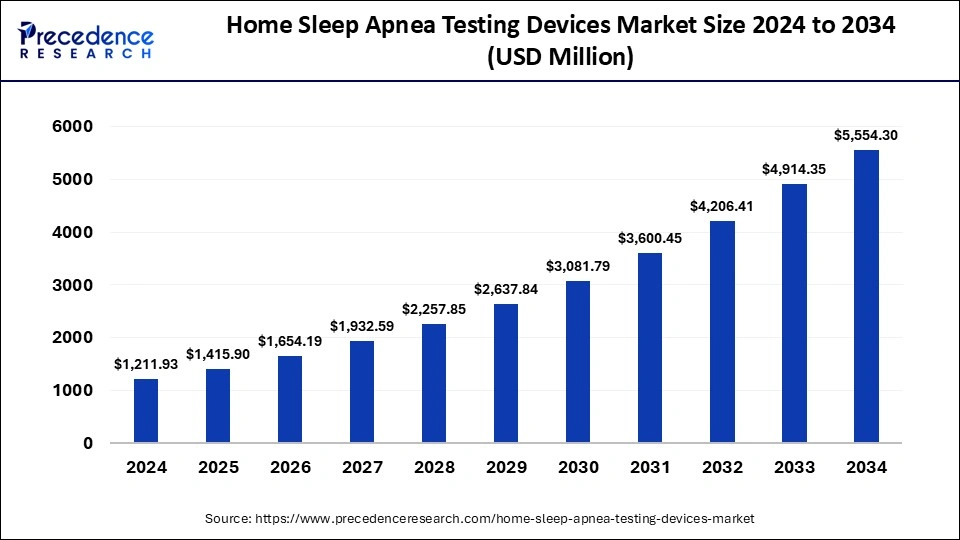
The U.S. home sleep apnea testing devices market size was calculated at USD 309.04 million in 2024 and is projected to attain around USD 1,452.23 million by 2034, poised to grow at a CAGR of 16.74% from 2025 to 2034.
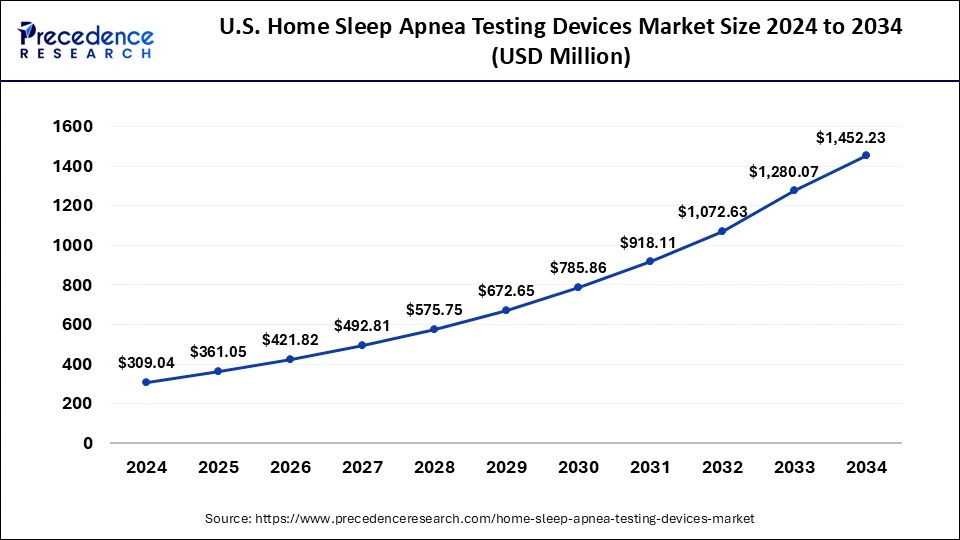
North America dominated the global home sleep apnea test devices market in 2024. North America plays a significant role in the global market for home sleep apnea test devices, with major contributions from the United States and Canada. The region benefits from a robust economy, technological advancements, and a strong consumer base with high purchasing power. The substantial growth in North America is attributed to its developed healthcare infrastructure. The United States and Canada host many leading companies in the home sleep apnea test devices market with their advanced healthcare systems.
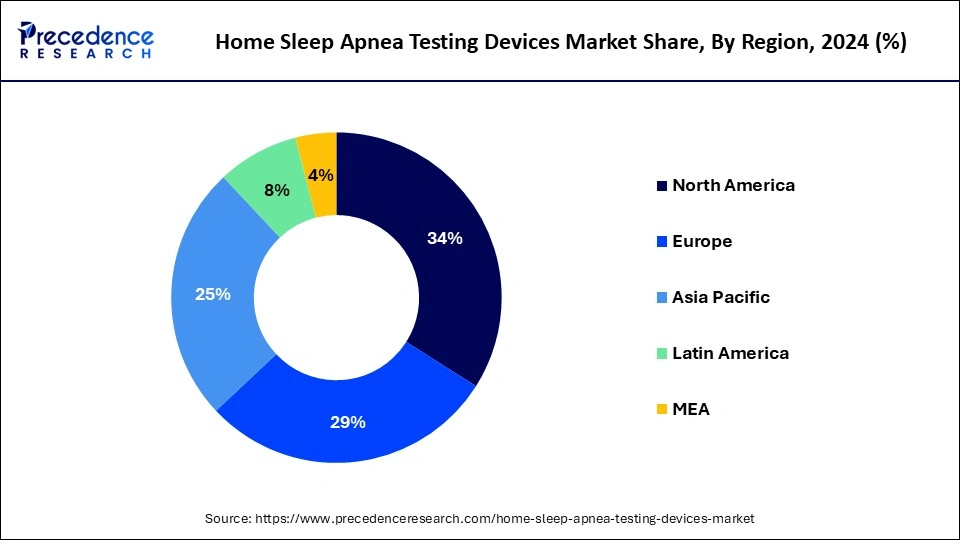
Asia Pacific is projected to experience the fastest growth in the home sleep apnea test devices market during the forecast period. This growth is being driven by countries such as China, Japan, India, and South Korea. This growth is supported by a large population, rising disposable incomes, and increasing urbanization, which can collectively boost the demand for the home sleep apnea test devices market and related services.
The home sleep apnea test devices market in India may expand or contract due to various factors, including macroeconomic conditions, population demographics, disease incidence rates, and geopolitical factors. Disruptions in the market can occur due to sudden and unexpected changes in these factors, as well as changes in clinical practices that influence the diagnosis and treatment of patients, as part of ongoing efforts to improve medical practices in general.
Home Sleep Apnea Testing Devices Market Overview
Sleep apnea is a sleep disorder that can lead to severe health issues such as hypertension, diabetes, stroke, cardiomyopathy, heart failure, and heart attacks. Untreated sleep apnea causes repeated breathing interruptions during sleep, resulting in loud snoring and daytime fatigue, even after a full night's rest. While it can affect anyone, it is most common in older, overweight men. However, it also affects people of all ages, including infants and children, particularly those over 50 and those who are overweight.
Common physical characteristics in patients with obstructive sleep apnea include excessive weight, a large neck, and structural abnormalities that narrow the upper airway, such as nasal obstruction, a low-hanging soft palate, enlarged tonsils, or a small jaw with an overbite. Sleep apnea is typically caused by a blockage of the airway when the soft tissue at the back of the throat collapses during sleep. Diagnosis involves sleep tests such as an overnight sleep study called a polysomnogram (PSG) or a home sleep test (HST).
| Report Coverage | Details |
| Market Size in 2025 | USD 1,211.93 Million |
| Market Size by 2034 | USD 5,554.30 Million |
| Growth Rate from 2025 to 2034 | CAGR of 16.44% |
| Largest Market | North America |
| Base Year | 2024 |
| Forecast Period | 2025 to 2034 |
| Regions Covered | North America, Europe, Asia-Pacific, Latin America, and Middle East & Africa |
Rising demand for home sleep apnea testing
In the home sleep apnea test devices market, the demand for home sleep apnea testing remains high, as it provides physicians with comprehensive information about a patient's breathing patterns. However, recent regulations from regional regulatory bodies for manufacturing sleep apnea devices have made it more challenging for new home sleep apnea testing manufacturers to enter the market.
Various home sleep apnea testing devices equipped with advanced sensors and detectors are available and are driving the home sleep apnea test devices market. These diagnostic tools often measure heart rate and oxygen levels, and their diverse applications are expanding the market for home sleep apnea testing. Typically, these devices can diagnose obstructive sleep apnea and hence contribute significantly to the home sleep apnea test devices market.
High initial investment and market fragmentation
In the home sleep apnea test devices market, the high initial investment required for the development and installation of these devices, especially for large-scale projects, can be a significant barrier to market growth. Additionally, companies must continuously innovate and adapt to changing preferences in order to retain and attract customers.
The home sleep apnea test devices market is fragmented, with many companies offering similar products and services. This makes it challenging to stand out and gain market share in such a competitive environment. Meeting the changing expectations of customers in terms of product quality, service, and experience is also a challenge.
The rising adoption of advanced sleep apnea devices
The shift in patient preferences from traditional sleep apnea devices to technologically advanced options is driving the growth of the sleep apnea devices market. Many patients now prefer mandibular advancement devices (MAD) over continuous positive airway pressure (CPAP) for treating obstructive sleep apnea. This change in preference is due to the discomfort and complications often associated with CPAP. The adoption of CPAP has significantly decreased in recent years with the introduction of alternatives like oral appliances. These factors are expected to have a positive impact on the global home sleep apnea test devices market during the forecast period.
The type 3 segment dominated the home sleep apnea test devices market in 2024. Type 3 devices are more cost-effective compared to polysomnography (PSG) devices, offering high effectiveness and efficiency in diagnosing obstructive sleep apnea. Furthermore, Type 3 devices have multiple functions, including detecting ECG or heart rate, oxygen saturation, and channels of respiratory movement and airflow. The increased production of Type 3 devices is subsequently driving market growth.
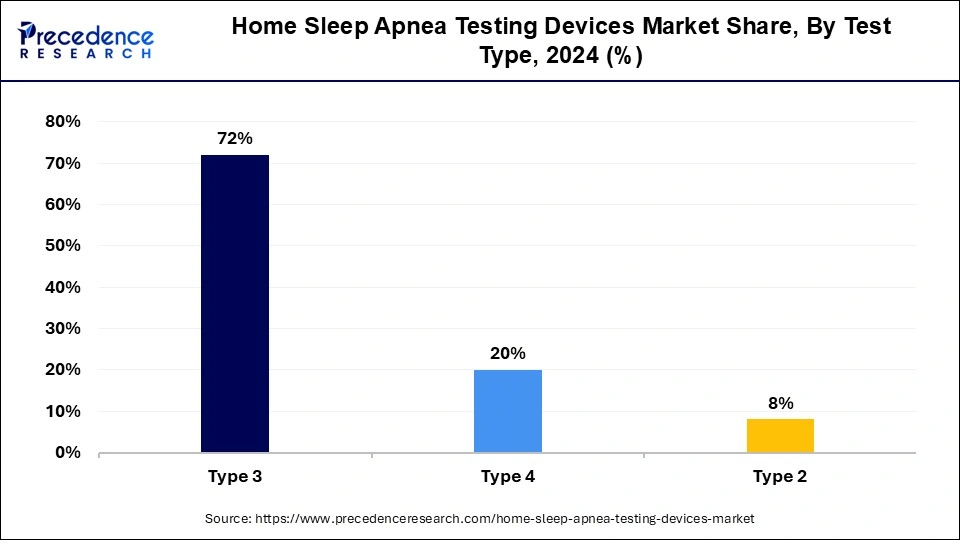
The home sleep apnea test devices market is expected to see the fastest growth in the type 4 segment. Type 4 devices, also known as portable cardio-respiratory monitors or home sleep apnea tests (HSAT), are used for screening obstructive sleep apnea (OSA) or aiding in diagnosing OSA in patients with a high pretest probability of moderate to severe OSA. Various HSAT devices have been developed for clinical use. One notable Type 4 HSAT device, developed in Japan, is widely used and highly popular. While some data indicate the usefulness of the Apnomonitor® for OSA screening, the clinical utility of its latest version, the Apnomonitor Mini®, has not been verified.
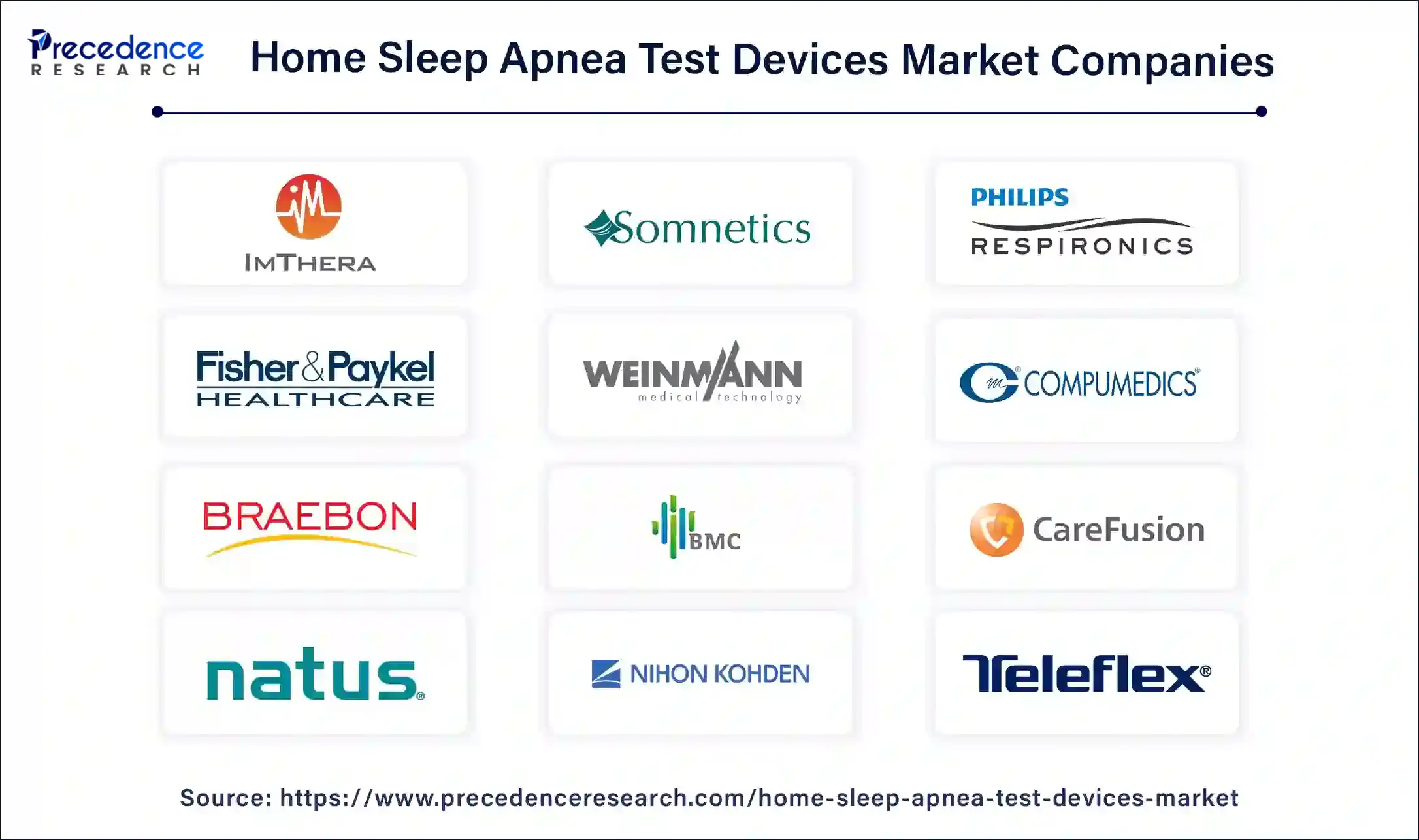
By Test Type
By Geography
For inquiries regarding discounts, bulk purchases, or customization requests, please contact us at sales@precedenceresearch.com
No cookie-cutter, only authentic analysis – take the 1st step to become a Precedence Research client
December 2024
August 2024
January 2025
November 2024